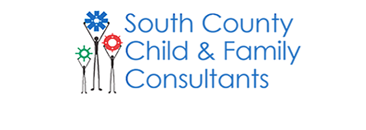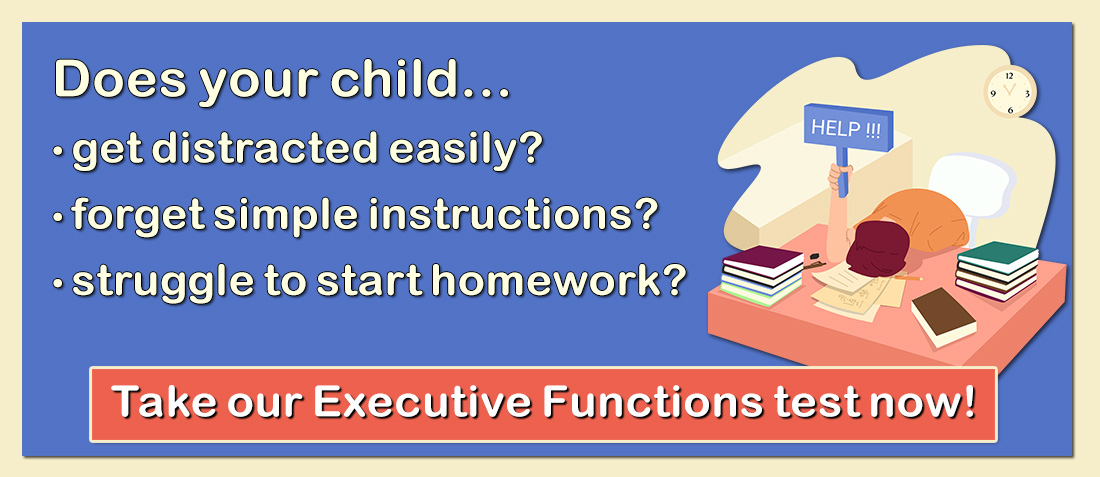 Attention Deficit/Hyperactivity Disorder creates more issues in school than at home. While many parents observe their children’s inattention or hyperactivity on a daily basis, these behaviors may not cause a great deal of impairment at home. However, in an academic setting, symptoms of Attention Deficit/Hyperactivity Disorder frequently create problems with regard to academic performance, behavioral expectations, and peer relationships.
Attention Deficit/Hyperactivity Disorder creates more issues in school than at home. While many parents observe their children’s inattention or hyperactivity on a daily basis, these behaviors may not cause a great deal of impairment at home. However, in an academic setting, symptoms of Attention Deficit/Hyperactivity Disorder frequently create problems with regard to academic performance, behavioral expectations, and peer relationships.
As a teacher, it is beneficial to be aware of strategies that instructors can use in the classroom to help children with Attention Deficit/Hyperactivity Disorder. Talking to children’s parents about school-based behavioral and academic interventions, including the development of a 504 plan, is often recommended. Supporting and reinforcing such school-based behavioral and educational strategies at home is also essential for helping a child to develop the skills that he/she needs in order to perform well in the classroom.
The following recommendations include strategies that teachers can use in the classroom to help youngsters with ADHD. You may find these to be useful for integrating into discussions with parents when addressing their children’s attention difficulties.
Classroom Adaptations and Accommodations
1. Provide students with consistent programs for study skills, test-taking skills, organizational skills, and time-management skills.
2. Provide students, in advance, with a weekly syllabus of the upcoming week’s assignments and lessons.
3. Minimize transitions and changes in schedules.
4. Help to minimize the frustrations that ADHD students feel by reducing stress, pressure, and fatigue.
5. Work on students’ self-esteem through the use of rewards rather than punishments.
Work Completion, Processing Speed, and Time Management
1. Have ADHD students estimate the amount of time it will take them to engage in different activities or complete certain tasks.
2. Teach these students how to scan a large chapter of text for key information and how to highlight important sections.
3. Encourage students to start long-term assignments in advance, getting all the necessary materials and information together even though they may begin working on the task itself at a later time.
4. Modify classroom and homework assignments. Have ADHD students complete every second or third problem, or have students use a timer and draw a line across the homework page at the end of 15 minutes of sustained work.
Homework and Classwork
1. Encourage the use of books-on-tape to support students in their reading assignments. The National Library Services provides books-on-tape for individuals with disabilities, including textbooks.
2. Allow students to begin an assignment and then, after completing the first few problems, to meet with the teacher for confirmation that they are doing the assignment properly and to receive gentle corrections or praise.
3. Make sure that all homework assignments are clear and provided in writing, not simply stated aloud.
 4. Utilize a daily assignment book for all ADHD students.
4. Utilize a daily assignment book for all ADHD students.
5. Provide individualized, written schedules that children and parents can refer to as needed.
6. Provide a second set of textbooks for the student to keep at home.
7. Remind children to check over their work, especially if their performance seems rushed and careless.
8. Determine the best times for classroom studying and work completion (perhaps have the student use a diary to determine these times).
Communication between Parents and Teachers
1. Work with parents to help with the organization and development of ADHD students’ academic routines.
2. Have frequent parent-teacher conferences to discuss children’s interests and achievements.
3. Use student planners for daily communication between teachers and parents.
4. Send home a weekly communication sheet at the end of each week with comments from all of the student’s teachers.
5. Use electronic methods to insure parent-teacher communication. If your school has such a system in place, use it daily. If not, talk to your school about programs such as echalk.com or mygradebook.com that are designed to improve communications regarding students.
Movement/Activity
1. Seat ADHD students near teachers’ desks but still as part of classrooms’ regular seating arrangements.
2. Allow students to stand at certain times while working.
3. Provide opportunities for “seat breaks” (i.e. allowing students to run errands, etc.).
4. Provide short breaks between assignments.
5. Allow students to move around (i.e. to pace in the rear of the classroom, run an errand, wash the blackboard, get a drink of water, go to the bathroom, etc.).
6. Make sure that students are always provided with opportunities for physical activity. Do not use daily recess as a time to make up missed schoolwork. Do not remove daily recess as a punishment.
7. Monitor ADHD students closely during recess. Insure that recess monitors and aides understand that students are active and need structure, not criticism, and provide students with regular feedback regarding appropriate behavior.
8. Permit students to play with small objects that are to be kept in their desks, can be manipulated quietly, and aren’t too distracting, such as a soft squeeze ball.
9. Many ADHD students learn best when they are active, moving, and doing. See if this inclination can be used to the advantage of students, having them walk around while dictating a story, practice spelling words outside at an extra recess, or study for a test at home while riding an exercise bike.
Attention Span/Distractibility
1. Attempt to avoid ADHD students becoming distracted by others.
2. Try not to place ADHD students near doors, windows, high traffic areas, heaters, or air conditioners.
3. Provide students with a quiet, distraction-free area for study time and test-taking.
4. Attend to students’ cycles of alertness, particularly when these cycles are medication-related.
5. Assign one task at a time. Ask students to repeat the directions for each task back to you.
6. Determine what works best for each individual student with regard to environment. One student may need to be isolated in total quiet, while another may need to sit next to a peer model.
7. Try out noise-reducing headphones with and without music playing.
8. Allow or provide snacks in order to increase energy and enhance attention.
9. Instruct students in self-monitoring via the use of self-statements, such as “pay attention,” to remind themselves to get back on-task.
10. Turn boring tasks into challenges by making them into games or contests.
11. Give students something to look forward to, such as computer time, after they complete a task.
12. Play classical music in the classroom.
13. Provide regular feedback and verbal reinforcement.
14. Be open to ADHD students’ doodling or use of manipulatives, such as clay, squeeze balls, and smooth objects, during class, which can help these students sit still and listen while in the classroom.
15. Use an FM system to assist with auditory processing.
16. Use high-impact visual aids with lively oral presentations to provide more interesting lessons.
17. Assist students in setting short-term goals for which they must maintain their attention for brief but sustained periods.
18. Provide children with a mixture of high and low-interest tasks. For example, follow a lecture with a hands-on activity. ADHD students are likely to respond better to a mixture of tasks rather than to a series of either high or low-interest activities.
19. Always seat ADHD students near the source of instruction and/or stand near these students when giving instructions in order to reduce barriers and distractions between him/her and the lesson. It is also important to encourage these student to sit near positive role models so as to ease their being distracted by other students’ challenging or diverting behaviors.
20. Have students highlight written directions for tasks before beginning them.
21. Give private, discrete cues to students to stay on-task. Cue these student in advance before calling on them, and cue them before an important point is about to be made (e.g., “This is a major point”).
Learning Styles
1. Match students’ needs and learning styles with teachers who understand the unique needs of ADHD children. Sometimes, teachers fit better with certain kids more than others. Some teachers are more able to see and engage the gifts of ADHD children, and others the gifts of LD or withdrawn children. Connecting with ADHD students will increase the frequency of positive, constructive, and supportive feedback and will help to identify, recognize, and build upon students’ strengths and interests.
2. Have frequent conferences with parents to learn about students’ interests and achievements outside of school.
3. If your school allows, involve parents in the selection of children’s teachers.
4. Appoint a single person, such as an instructional aide, for each ADHD student to report to for help.
5. ADHD students may need help for a longer period of time, but you will need to gradually reduce assistance over time.
6. Understand the differences between inconsistency, a core characteristic of ADHD, and poor attitude.
Organization/Skill Development
1. Encourage the use of color-coded notebooks, folders, and dividers. Help students set up a system of organization using color-coding by subject area, especially for those materials that need to be stored in their school locker and accessed throughout the day.
2. Using the weekly communication sheet, inform parents and/or advisors in advance when special or long-term projects are assigned.
3. A great product to help make homework fun is the new Fly Pen from Leap Frog. This tool is an interactive, battery-run pen that records what you write. It even includes a clock, calendar, schedule, dozens of games, and many other features! For more information, go to: flypentop.com.
4. Suggest to parents organizational-skills training and provide for parents and ADHD students written directions on developing a homework routine.
5. Regularly check desks and notebooks for neatness; reward neatness rather than penalizing sloppiness.
6. Provide daily assistance/guidance to students in using a planner on a daily basis and in completing long-term assignments. Help students plan how they will break up their larger assignments into smaller, more manageable tasks.
7. Teach students efficient methods of proofreading their own work.
8. Some of the most common things for ADHD children to do are to procrastinate, to miscalculate, and to avoid unpleasant tasks until the last minute. Therefore, close guidance in planning long-term projects is very important. Part of the ADHD spectrum of symptoms is a sort of temporal disability, where the gauging of time and how long tasks will take is distorted.
9. By modeling examples of how to plan, coaching students through the planning process, and enforcing their consistent practice, you can help children with ADHD to gain a better sense of how to plan within a timed framework.
10. Use your school website to post homework assignments. To log homework assignments on the computer, download the Microsoft Office Online Weekly Homework Schedule for Microsoft Word: office.microsoft.com.
11. Make a classroom blog available for parents to inform them of projects and classroom activities.
Behavioral Management
1. Set up social behavior goals with students and implement a reward program.
2. Work on enhancing students’ self-esteem through the use of rewards rather than punishments.
3. Administer consequences immediately and consistently.
4. Ignore minor inappropriate behavior
5. Prepare students in advance for upcoming changes in their routine (i.e. field trips, transitions from one activity to another, etc.).
Enforcing Directions, Providing Feedback, and Monitoring (Parents and Teachers)
1. Monitor ADHD students closely, and provide them with consistent feedback regarding appropriate behavior.
2. Help ADHD students feel comfortable in asking for help from teachers and parents.
3. Provide verbal reinforcement and individual cues when necessary.
4. Write common directions and routines on cards and tape them to students’ desks.
Technology
1. Many ADHD students respond very well to the use of a computer and are apt to do better on writing assignments through the use of a word processor.
2. Provide technical accommodations, such as a laptop computer, which might decrease children’s tendency to lose papers.
3. Provide computer programs in the resource center that focus on vocabulary development, word attack, and phonics to strengthen student’s reading skills. Programs that identify deficit skill areas and a means of monitoring progress are of particular value. Programs that emphasize verbal reasoning and comprehension are also helpful.
4. Encourage students’ learning of keyboard skills.
5. Allow students to tape-record assignments or homework.
6. Allow students to use voice-recognition systems for first drafts of writing assignments.
7. Use iPods and cell phones to keep track of assignments. Use text messaging, taking pictures of assignments, and setting alarms to help.
8. Encourage the use of specific learning software and websites, such as Headsprout.com for reading or Dreambox.com for math, to supplement classroom instruction.
9. Support additional reading and math skills by using websites such as kids.nationalgeographic.com and sikids.com/.
Peers
1. Surround ADHD students with good role models who view these students in a positive manner.
2. Encourage peer-tutoring and cooperative learning tasks.
3. Some ADHD students benefit from involvement in social skills groups.
4. Assign special responsibilities to ADHD students in the presence of their peer groups so that others observe these students in a positive light.
5. Help ADHD students feel comfortable in asking other students for help.
Websites
LearningWorks for Kids: The best website for learning how to use innovative technologies to help your child with ADHD.
ADDitude: Living Well with Attention Deficit: This site offers Attention Deficit information and support. For parents, it also offers school help & accommodations for children with ADHD, dyslexia & more.
Children and Adults with Attention Deficit / Hyperactive Disorder: This site is for parents and teachers seeking information about children with ADHD having trouble in school, and it offers information about ADHD and school, in grades ranging from Kindergarten through 12th grade.
LD OnLine: Your ADHD Child and School: This site helps parents learn about ADHD and how it affects children at home, in school, and in social situations.
NASP Resources: This site includes a combination of medication and behavioral interventions that tend to yield the greatest improvement in social skills and school performance for students with ADHD.
Books
DuPaul, G. J, Ph.D. and Stoner, G., Ph.D. (2004). ADHD in the Schools, Second Edition: Assessment and Intervention Strategies. New York, NY: Guilford Press. (This popular reference and text provides essential guidance for school-based professionals meeting the challenges of ADHD at any grade level.)
Iseman, J., Silverman, S., and Jeweler, S. (2010). 101 School Success Tools for Students with ADHD. Waco, TX: Prufrock Press, Inc. (This book provides the tools for empowering students with ADHD to become successful learners, both inside the classroom and at home.)
Monastra, V. (2004). Parenting Children With ADHD: 10 Lessons that Medicine Cannot Teach. Washington, D.C.: American Psychological Association. (This book gives parents a framework for building a successful parenting program at home using a series of ten lessons that are essential for promoting the success of kids with ADHD.)
Mooney, J., Cole D., and Hallowell E. M. (2000). Learning Outside The Lines: Two Ivy League Students with Learning Disabilities And ADHD Give You the Tools. New York, NY: Fireside. (A book for high school and college students that offers learning and study strategies for individuals who learn differently.)
Rief, S.F. (2005). How to Reach and Teach Children with ADD/ADHD: Practical Techniques, Strategies, and Interventions.San Francisco, CA: Jossey-Bass. (This book is intended for teachers and parents. It includes real-life case studies, interviews, and student-intervention plans for children with ADD/ADHD. In addition, the book contains “best teaching practices” and countless strategies for enhancing the classroom performance of all types of students.)
Silverman, S.M., Iseman, J. S., and Jewler, S. (2009). Waco, TX: Prufrock Press, Inc. (This book offers parents and teachers the support they need to ensure children with ADHD build on their strengths, circumvent their weaknesses, and achieve to their fullest potential.)
Receive online class information and helpful tips from Dr. Randy Kulman's LearningWorks for Kids |



